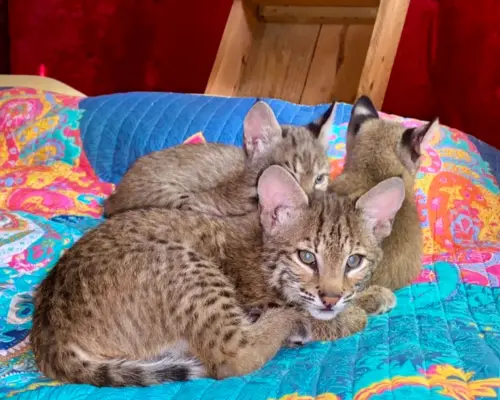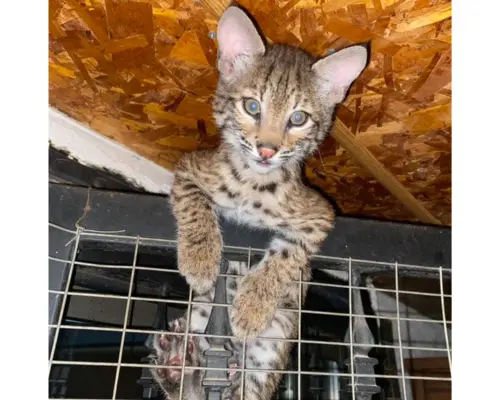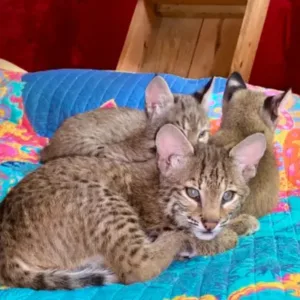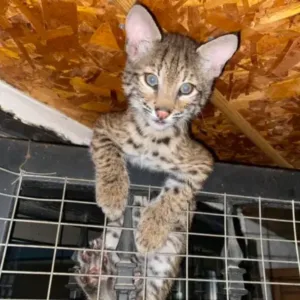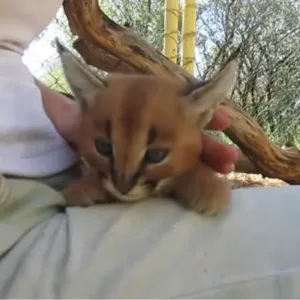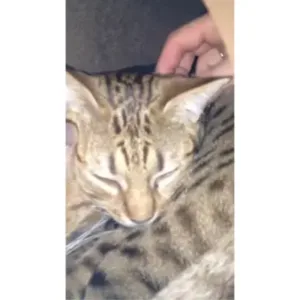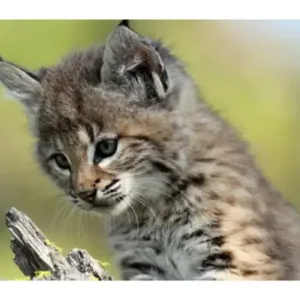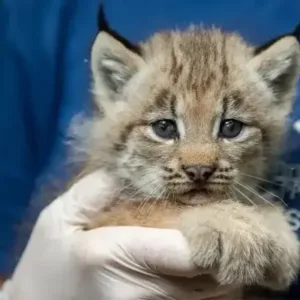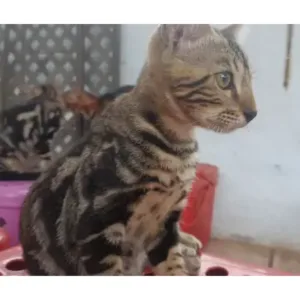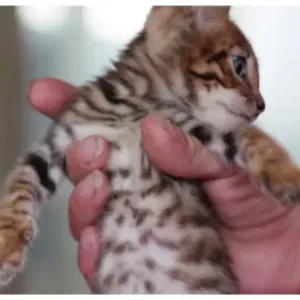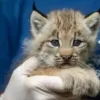The bobcat (Lynx rufus), also known as the lynx, is a medium-sized cat native to North America. Its range extends from southern Canada through most of the contiguous United States to Oaxaca, Mexico. It has been listed as “Least Concern” on the IUCN Red List since 2002, due to its wide distribution and large population. Although it has been widely hunted for both sport and fur, populations have been shown to be stable, although declining in some areas.
It has distinctive black bars on its front legs and a short black (or “bobbed”) tail, hence its name. It reaches a total length (including the tail) of up to 50 inches. It is an adaptable predator that inhabits wooded areas, semi-desert environments, urban edges, forest edges, and swamps. It survives in part of its native range, but populations are vulnerable to extirpation by coyotes and domestic animals. Although bobcats prefer rabbits and hares, they will hunt insects, chickens, geese and other birds, small rodents and deer. Prey selection depends on location and habitat, season and abundance. Like most cats, bobcats are territorial and largely solitary, although home ranges sometimes overlap. They use several methods to mark the boundaries of their territory, including claw marks and deposits of urine or feces. Bobcats breed from winter to spring and have a gestation period of about two months.
Two subspecies are recognized: one east of the Great Plains, the other west of the Great Plains. It appears in some of the stories of the indigenous peoples of North and Central America, as well as in the folklore of the European inhabitants of the Americas.
The bobcat is an adaptable species. It prefers forested areas, whether deciduous, coniferous, or mixed, but does not depend exclusively on deep forest. Its range extends from the wet marshes of Florida to the desert lands of Texas or rugged mountainous areas. It makes its home near agricultural areas, if rocky ledges, swamps or wooded areas are present; its spotted coat serves as camouflage. The bobcat’s population is primarily dependent on its prey population; other major factors in choosing habitat type include protection from the weather, availability of resting and denning sites, dense cover for hunting and escape, and freedom from disturbance.
The range of the bobcat does not appear to be limited by human populations, but by the availability of suitable habitat; only large, intensively cultivated areas are not suitable for the species. The animal may appear in backyards in “urban edge” environments, where human development intersects with natural habitats. If chased by a dog, it usually climbs a tree.
The bobcat’s historical range extended from southern Canada, across the United States, and as far south as the Mexican state of Oaxaca, and it still persists in much of this region. In the 20th century, it is thought to have lost range in the U.S. Midwest and parts of the Northeast, including southern Minnesota, eastern South Dakota, and much of Missouri, primarily due to habitat changes caused by modern agricultural practices. Although no longer thought to exist in western New York and Pennsylvania, multiple confirmed sightings of bobcats (including dead specimens) have recently been reported in the Southern Tier of New York and central New York, and a bobcat was captured in 2018 on a tourist boat in downtown Pittsburgh, Pennsylvania. Additionally, bobcat sightings have been confirmed in northern Indiana, and one was killed near Albion, Michigan in 2008. In early March 2010, a bobcat was spotted (and later captured by animal control authorities) in a downtown Houston parking lot. As of 2010, bobcats appear to have recolonized many states, being present in every state in the contiguous 48 states except Delaware.
The bobcat population in Canada is limited due to snow depth and the presence of the Canada lynx. Bobcats do not tolerate deep snow and wait for heavy storms in sheltered areas; they do not have the large padded paws of the Canada lynx and cannot bear their weight on snow as effectively. The bobcat is not entirely disadvantaged when its range meets that of the larger cat: displacement of the Canada lynx by the aggressive bobcat has been observed where they interact in Nova Scotia, while clearing of coniferous forests for agriculture has resulted in a northward retreat of the range of the Canada lynx in favor of the bobcat. In northern and central Mexico, the cat is found in dry scrub and pine-oak forests; its range ends in the tropical southern part of the country.


